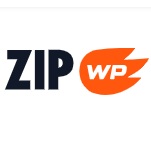Agentic AI Comparison:
Bolt.diy vs ZipWP
Introduction
This report provides a detailed comparison of two AI-powered web development agents—Bolt.diy and ZipWP—using five metrics: autonomy, ease of use, flexibility, cost, and popularity. These tools serve different audiences: Bolt.diy is a developer-centric platform prioritizing custom code control, while ZipWP targets users who want rapid, no-code or low-code WordPress site creation.
Overview
Bolt.diy
Bolt.diy is an open-source, in-browser AI-powered app builder that enables users to generate full-stack web applications using natural language prompts. It is designed for developers seeking granular control, featuring a real code editor, terminal, and the flexibility to customize project stack, permissions, and architecture. Bolt.diy runs locally and is particularly suited for users comfortable with coding and manual setup.
ZipWP
ZipWP is an AI-powered website builder focused on radically accelerating WordPress website creation. Users can generate a professional, fully functional site (including content and images) in minutes, with minimal manual input. ZipWP is designed for non-technical users or those seeking quick results, offering a simple interface and automated processes for content, design, and deployment.
Metrics Comparison
autonomy
Bolt.diy: 9
Bolt.diy offers extensive developer autonomy, providing direct access to code, a terminal, and granular control over stack elements and app architecture. Users can manually override, configure, and fine-tune all aspects of their projects, which is ideal for experienced developers seeking authority over their workflows.
ZipWP: 6
ZipWP prioritizes automation and abstraction, limiting direct access to underlying code or server settings. While this makes the platform easy and fast, it restricts user autonomy, especially for customization beyond the AI-generated templates and content.
Bolt.diy significantly outpaces ZipWP in terms of developer autonomy and manual control, but this comes with added complexity.
ease of use
Bolt.diy: 6
Bolt.diy is best suited for users with at least moderate technical proficiency. The interface is developer-focused, with features such as a code editor and terminal, which may be overwhelming for beginners or non-technical users.
ZipWP: 9
ZipWP excels in ease of use, enabling quick website creation through natural language prompts and user-friendly workflows. The fully guided process and minimal need for technical knowledge make it accessible for users of all backgrounds.
ZipWP is far simpler to use, especially for non-technical users, while Bolt.diy offers power at the cost of a steeper learning curve.
flexibility
Bolt.diy: 9
Bolt.diy is highly flexible, supporting deep customization of code, stack, permissions, and architecture. Users can integrate various APIs, adjust build parameters, and modify nearly every aspect of their applications.
ZipWP: 6
ZipWP restricts customization to the boundaries of its automated AI templates and WordPress environment. While users can edit content and design elements, deeper stack or backend customization is not supported.
Bolt.diy's flexibility makes it suitable for complex, bespoke applications, whereas ZipWP streamlines the process at the expense of customizability.
cost
Bolt.diy: 9
Bolt.diy is open source and can be run locally for free. Its primary costs are related to optional cloud deployments or integrating paid external APIs. This cost-effective model is attractive for power users or teams on a budget.
ZipWP: 7
ZipWP offers a freemium model—basic sites can be created for free, but advanced features, templates, and hosting typically incur monthly or annual fees. This pricing aligns with similar SaaS solutions in the no-code/WordPress space.
Bolt.diy is generally more cost-effective, especially for developers able to self-host, whereas ZipWP’s value is in its convenience and speed.
popularity
Bolt.diy: 7
Bolt.diy is well-regarded among developer communities but has a more niche audience due to its technical focus. Its open-source status boosts transparency but limits mainstream adoption.
ZipWP: 8
ZipWP is rapidly gaining popularity, particularly in the WordPress space, due to its strong marketing, ease of use, and alignment with the growing demand for AI-assisted site builders.
ZipWP is more popular among general users and small businesses, while Bolt.diy holds a stable reputation in developer circles.
Conclusions
Bolt.diy and ZipWP represent two distinct approaches to AI-powered web development. Bolt.diy is ideal for developers seeking full control, flexibility, and minimal cost, albeit with a higher barrier to entry and greater complexity. ZipWP, by contrast, shines in ease of use, popularity, and speed, making it a compelling choice for users wanting a hassle-free, automated WordPress website creation experience, but it falls short in autonomy and deep customization. The right choice will depend on the user's technical comfort, project requirements, and budget.

